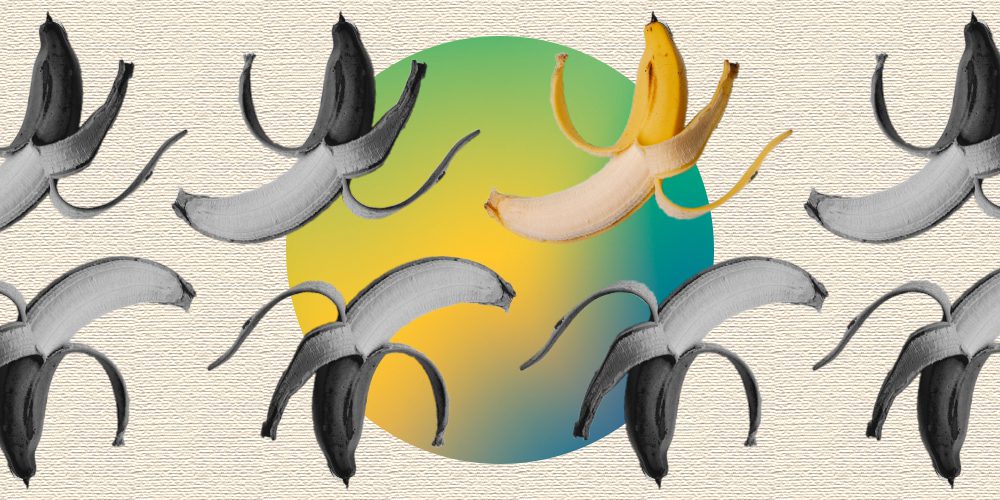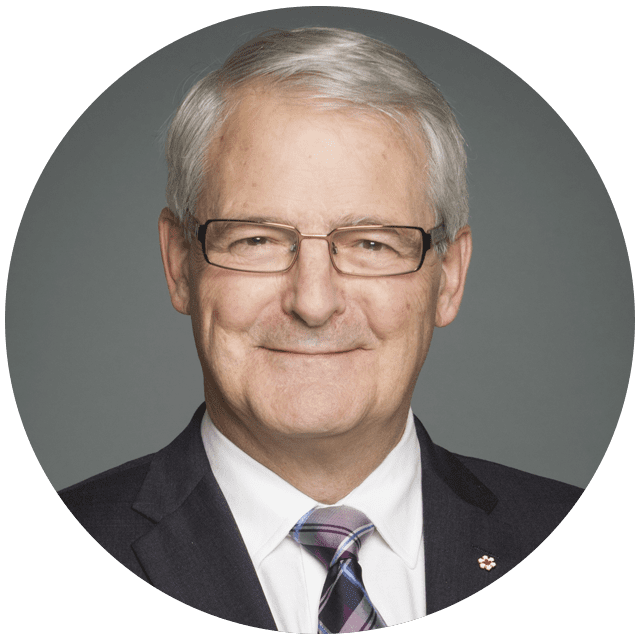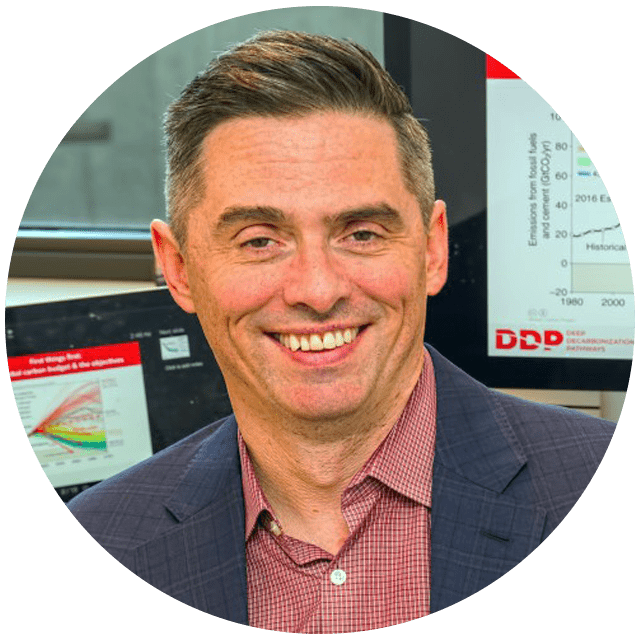Home » Trash to treasure: how rethinking waste can help tackle climate change
Trash to treasure: how rethinking waste can help tackle climate change

Photo illustration by Kelvin Li
Humans generate an incredible amount of trash. In Canada alone, 35 million tonnes of food is wasted every year. That’s a lot of energy spent growing, processing, packaging and delivering food that ultimately goes uneaten — and all that waste creates a lot of greenhouse gases. To fix the climate, we have to redefine our relationship with waste; that means doing more with what we already produce. In this episode, we head up into space to see how astronauts deal with their waste, travel to a facility to learn how food scraps are being transformed into biogas and explore how the concept of circularity could help us manage our resources better. It’s time to face the waste.
Featured in this episode:





Further reading:
Subscribe to Solve for X: Innovations to Save the Planet here. And below find a transcript to the seventh episode “Trash to treasure: how rethinking waste can help tackle climate change”
Manjula Selvarajah: When astronauts view Earth from outer space, many experience a phenomenon called the overview effect. Seeing the planet’s oceans and land masses, and its thin layer of atmosphere, they feel on a visceral level just how fragile life on Earth really is. For some, it can prompt a kind of cognitive shift in awareness.
Marc Garneau: I’ve seen Earth from space and I’ve seen some of the damage that we’re doing to our planet — and part of that damage is the fact that we produce a lot of waste.
Manjula Selvarajah: Think about all the work, all the resources and the sheer determination it took us to get into space in the first place. Imagine if we could do that again — not to visit another celestial body, but to solve the problems facing our planet.
Marc Garneau: My name is Marc Garneau. I’m an ex-astronaut, but my job at the moment is as the Member of Parliament for the federal riding of NGD Westmount in Montreal.
Manjula Selvarajah: Marc Garneau isn’t your average MP. In addition to being Canada’s former transport minister, he was also the first Canadian to go into space.
Five, four, three, two, one, zero — and liftoff! — of the space shuttle endeavor to develop the practical and the beneficial aspects of space.
Manjula Selvarajah: Over the course of several missions, he logged nearly 700 hours in orbit.
Marc Garneau: Gosh, when I flew over Brazil in 1984, a large part of the Amazon forest was on fire. I can remember seeing the atmosphere yellowish over certain parts of the world because of the production of pollutants from cars. So we are as humans — intentionally or unintentionally — damaging our planet, and I’ve been talking about that for 38 years.
Manjula Selvarajah: This is Solve for X: Innovations to Save the Planet — a series where we explore the latest ideas in tech and science that could help us tackle climate change; I’m Manjula Selvarajah. Today we’re venturing up into space to gain a better perspective on one of the biggest issues facing this planet, the incredible amount of waste we produce. To fix the climate, we’re going to have to radically shift how we deal with our garbage. To do that, it might help to think more like an astronaut.
Now on Earth we are (for the most part), surrounded by abundance. We have enough air to breathe, water to drink — even enough room for our trash. But in outer space, it’s a different story. To sustain life on the Space Station, there are some ingenious technological systems at play.
Marc Garneau: So there’s all sorts of recycling that is done. And when we talk about urine, for example, and recycling that; I know that for some people the idea just sounds pretty icky. You know, the joke being that — the coffee I drink today will be somebody else’s coffee tomorrow. People think that’s a little bit funny and perhaps… no, I don’t want to go there. But if you have to, you begin to realize that this is a practical way of — on a space station for sure — to recycle a very precious commodity called water.
Manjula Selvarajah: These days, NASA is looking into what else can get recycled in space.
Annie Meier: I’m Annie Meier and I’m a chemical engineer, and also a principal investigator here at NASA Kennedy Space Center.
Manjula Selvarajah: To help astronauts conserve resources, Annie works on how we can transform trash into gas.
Annie Meier: So you have things like baby wipes or washcloths, you know, spent toothbrushes. We also have food packaging.
Manjula Selvarajah: Annie and her team developed a small cube shaped reactor called OSCAR. It heats the trash, breaking it down to its elemental components: hydrogen, oxygen, and carbon. And then it rearranges those elements to make water and synthetic fuel.
Annie Meier: Overall, the goal would be less than a kilowatt of power to process a crew of four’s daily trash production. And a crew of four on a one-year mission would produce about 2,000 kilograms of logistical trash.
Manjula Selvarajah: So far they’ve tested Oscar in microgravity test flights and they’re working on one day bringing it to space. Annie also hopes that she may one day see it benefit communities a little closer to home.
Annie Meier: Think of high volume waste like food cafeterias, hospitals — places where there’s a lot of people producing a well-characterized type of trash. I think that would be fantastic. And then you have a cogeneration plant right there, cogenerating the hospital or the school. And then you wouldn’t have to have garbage trucks haul the trash through dumpsters. To me, I truly hope we get there.
Manjula Selvarajah: What if that idea about circularity that astronauts use, could help us solve our waste problems? A little later on in the episode, we’re going to explore the potential of trash-to-gas on a larger scale. But first, we need to understand the sheer enormity of our waste problem. In Canada, 58 percent of the food we produce is wasted. Every year, that adds up to more than 35 million tonnes of trash. That’s a lot of energy spent growing, processing, packaging and delivering food that ultimately goes uneaten — and all that waste creates a lot of greenhouse gases. To find out more, I reached out to food systems expert Tammara Soma.
Tammara Soma: The fact of the matter is that in Canada, a lot of municipalities don’t have composting infrastructure yet. So what we have is, we have an issue where people mix food waste with every other waste — plastic, and you name it — and it goes to a landfill where it basically decomposes and generates a greenhouse gas: methane.
Manjula Selvarajah: Tammara is an assistant professor with the School of Resource and Environmental Management at Simon Fraser University and the director of The Food Systems Lab. And when it comes to food waste, she walks the talk.
Tammara Soma: My kids call me the compost mom because I eat all of their leftovers. My daughter told me: “Mama, that actually fell on the school floor.” And I said: “Oh my God, you tell me now!” So that is my limit. I’m no longer doing that… or at least I will ask next time before I eat the food.
Manjula Selvarajah: As a researcher, Tammara looks at how we can build circularity into our food systems to help reduce food waste.
Tammara Soma: Studies have shown that a shorter food supply chain can reduce food waste.
And that’s because the longer the food supply chain is, the more that food can be wasted all along the way; right from the point of harvest, to having to be trucked, and then going into maybe a boat or an airplane, and then having to go on a truck again. And then by the time it gets to the final destination and then it gets consumed — sometimes the food might not even be fresh anymore.
Manjula Selvarajah: A lot of food waste — more than half of it, according to a study from Second Harvest — happens before it ever reaches our plates. We don’t even see it. I was curious how that changes our perception of the problem. I put that question to Tammara. Unless you work with food or waste management, it’s pretty easy to be separated from what happens when you put your garbage out. For most people, it’s at the end of the curb or it’s down a chute somewhere in a building and I’m done. How does separation or distance contribute to the waste that we see?
Tammara Soma: We rely on a very globally distanced food supply chain. But the point of the matter being is that: distance matters. Because when we are distanced, it makes us detach. So when we’re eating food, we’re not thinking about the whole system; we’re not thinking about the farmers, we’re not thinking about the migrant farm workers. We’re not thinking about the fact that — hey, this food can actually go back to nourish the soil. We’re not thinking about that. I mean, greenhouse gas basically is invisible to the eye. So for the most part, no one’s going to see that — OK, if I actually produce a lot of food waste, that’s going to create methane and that’s going to contribute to global warming. No one can really see that with their eyes. And so, that whole distancing piece really matters.
Manjula Selvarajah: As Tammara says, we’re increasingly distanced from the waste we produce and also the impact it creates when it comes to methane. Even though methane is shorter lived than carbon dioxide — as a gas it’s 30 times more potent. According to a UN report last year, cutting methane emissions will play a critical role in tackling the climate crisis. One of the efforts underway to reduce these emissions involves transforming organic waste into other useful resources. I wanted to see firsthand how it all works.
Walkie-talkie 1: “Okay, perfect. Can you just let Brandon know when you’re done then?”Walkie-talkie 2: “Absolutely.”
Walkie-talkie 1: “Thank you.”
Brandon Moffatt: Let’s do a quick safety moment. So it’s an industrial facility — just stay with me at all times. Please don’t touch any equipment.
Manjula Selvarajah: That’s Brandon Moffatt, co-founder of StormFisher.
Brandon Moffatt: And so what we’re doing here is we’re processing organic waste.
Manjula Selvarajah: The company takes organic waste from the greater Toronto area, as well as waste from grocery stores and food manufacturers, and transforms it into energy. They use a process called anaerobic digestion. To see how it’s done requires a microscope; the bacteria breaks down the waste to produce gas. They can burn that gas to make electricity or refine it to create a fuel called biothane, also known as renewable natural gas. And what’s left over gets sold to farmers as fertilizer. I met up with them at their waste sorting facility in Drumbo, Ont.
Tour guide: “Come on in.”
Manjula Selvarajah: The day I went, the team was getting ready to process a shipment of hot dogs. I’m talking hundreds and hundreds of hot dogs… enough to feed my kids’ entire school.
Tour begins
Manjula Selvarajah: I’ve walked over to a spot where there’s something like — I’d probably say about 10 to 12 massive boxes full of winners.
Brandon Moffatt: And it’s not just wieners. This could be TicTacs, this could be beer. When something’s off-spec, it ends up at our door.
Manjula Selvarajah: And what your team does is then, actually unpack them — is that right? And then they join everything else in the process?
Brandon Moffatt: That’s correct. So it might say a certain weight, but it’s not that weight so they can’t sell it. Well, what do you do with these products? They can send them to landfill, or they can send to us and we separate them.
Manjula Selvarajah: Brandon explained that when someone wants to offload their trash, he has to ask a lot of questions; because when Brandon agrees to take a shipment — it’s a commitment to prevent methane emissions from going into the atmosphere. But I have to say it’s overwhelming when you see a facility like that for the first time — to see so much good food wasted. I asked Brandon how it affects him.
Let me ask you this because I know that you care. I mean, you come from a farming background too, and you care about the issue of the environment, right? What’s the thing that you see in there that disappoints you the most?
Brandon Moffatt: I’d say the vegetable stuff on the ground. There’s a lot of people right now, with the economy the way it is — they’re trying to figure out how to make ends meet. And with inflationary pressures, things are just getting more expensive. And you see stuff like that on the floor, that’s pretty frustrating because there are people that really could use that. And so it’s not to say that we’re like: “Oh, send it to us.” No. We actually work with a lot of the organizations that want to upcycle these materials. It’s just sometimes the supply chain isn’t as efficient as it should be. And so there, it creates waste and excess. And I’m better off handling it here, than it ending up in other spots, but that’s probably one of the things that can be challenging and frustrating.
Manjula Selvarajah: A report from the federal government this year found that municipal landfills are responsible for almost a quarter of Canada’s methane emissions. So diverting food waste to make gas could go some way to deal with those emissions. I asked Brandon about the business of extracting value from all that waste.
Brandon Moffatt: So now I’m no longer having to sort of “pry doors open” and “please listen to us.” Literally, we’re getting calls every single day from large industries, utilities, governments that are trying to decarbonize. And plants like Drumbo, London and the other infrastructure that we built, is becoming very relevant today to reach our 2030 and 2050 goals.
Manjula Selvarajah: So you can take organic waste and turn it into gas, but how does biogas fit into an overall decarbonization strategy? That’s more complicated. To learn more, we reached out to Chris Bataille. He’s a policy researcher and one of the lead authors for the latest report from the Intergovernmental Panel on Climate Change.
Chris Bataille: Methane should be a temporary energy source. Whether it’s from fossil fuels or it’s from biomass sources, it’s not something we can be doing forever.
Manjula Selvarajah: Biomethane, renewable natural gas, or RNG … chemically it’s all the same. Methane that’s produced from sustainable sources.
Chris Bataille: What’s fundamentally different with biomethane is that the carbon and hydrogen came from recently grown plants, which pulled CO2 out of the atmosphere. But really, natural gas that the utility (mostly) sells you is fossil methane. There are some critical linguistic tricks being played here that we need to be really clear about.
Manjula Selvarajah: Experts like Chris are discussing the potential for biomethane to act as a bridge to help us decarbonize.
Chris Bataille: But in order for it to be a real bridge, it’s got to be real renewable, natural gas. It’s got to be bio-based or it’s got to be synthetic.
Manjula Selvarajah: Instead of extracting new fossil fuels, finding low carbon alternatives like biomethane could help us get the most out of the carbon intensive resources that are already in circulation.
Chris Bataille: Now what you’re talking about with biogas, biomethane and these sort of “renewable type” liquid fuels, is we’re introducing an element of circularity to the carbon to the atmosphere. And instead of adding carbon to the atmosphere as we were doing before, you’ve got a circle going on and that’s what allows us to use things like biogas, biomethane, wood, as relatively carbon neutral energy sources.
Manjula Selvarajah: Theoretically, renewable gas could add up to a lighter impact on the planet, but if the actual carbon intensity doesn’t match the accounting, there’s a risk it could hold up real progress.
Chris Bataille: Biogas and biomethane are an intermediate step on the road to net zero — and to a much cleaner economy. So much of industry (of all sizes and shapes) runs on natural gas or fossil methane. There are many industrial facilities that were built in the late 1800s that are still running today. We know how to basically electrify or use hydrogen for almost all industrial processes, but it’s going to be a long time before industry can convert; and we’re going to need renewable natural gas or biogas in the interim.
Manjula Selvarajah: Even though biogas and biothane are friendlier to the climate than non-renewable alternatives, it’s not so straightforward.
Chris Bataille: There are big indoor air quality problems that come from natural gas stoves, from furnaces, what have you. Homes and buildings should be purely run on 95 percent electric, maybe some hydrogen. That needs to be the new build standard from the 2030s on. But the problem is we don’t get from here to there — it’s not a quick jump — because we have all these buildings that we’ve built that run on methane, on natural gas. And as those things are turned over we can convert them, but in the meantime, we need a cleaner fuel that’s emitting less CO2. And that’s what the role of biomethane and biogas is.
Manjula Selvarajah: Studies show that even if renewable natural gas was built out to its maximum potential, it would only replace a fraction of our consumption of natural gas.
Chris Bataille: With the existing food waste out there that’s wasted and goes to dumps and what have you — we could probably double or triple that amount — but it’s not nearly enough to run our country on. Now the interesting thing is, biomass is not the only way to make renewable natural gas; we can actually make natural gas chemically. So methane is one carbon atom surrounded by four hydrogen atoms. If you can get clean hydrogen, and one carbon atom up from out of the sky or from biomass, we can make that into a methane molecule and then send that down the pipe. So we literally can synthesize methane, it doesn’t have to necessarily come from biomass sources.
Manjula Selvarajah: Increasingly, Chris sees the potential in transforming other carbon intensive resources to build a more circular economy.
Chris Bataille: Right now we have a global economy that takes high value resources of all sorts of kinds — be they food, be they plant life, be they metals, what have you — and we process them with energy and we generally degrade them. And then once it wears out or it’s no longer useful, we dump it out the back end. And it goes into landfills, it goes into the ocean, it goes all sorts of places. It’s a one-way system, right? Coming back to that spaceship/Earth analogy that you were using earlier — they can’t do that on the International Space Station; that’s eventually kind of where we need to go on the planet. And what you’re doing is you’re pushing energy through the system to keep transforming it on each cycle, and it has to be clean energy one way or the other. And it applies to all the materials that we use,
Manjula Selvarajah: Getting society to an efficient closed loop system, like what’s on the International Space Station, seems particularly daunting when you consider how large and complicated our food system is. Back to my conversation with food system expert, Tammara Soma.
Tammara Soma: There’s such a strong emphasis on solutions downstream — to recover, to redistribute, to transform. And you know, these solutions all have a place and I think many of them are very good — but we’re not putting in the same energy into actually valuing the food to begin with.
Manjula Selvarajah: How did we get to that point — that we are so picky about what we eat and that it looks a particular way?
Tammara Soma: Right. That’s a very good question, and actually it didn’t start with just individuals being picky. That is an issue that is dominant and prevalent with modern supermarkets; they need things to be more standardized. So when you go to the farmer’s market, you might be exposed to different types of fruits and vegetables that are not so rigid in their shape and in their sizes; same as when you go to your own garden. When I go to my own garden, my tomatoes might be a bit wonky… but I’m still going to eat it!
Manjula Selvarajah: Relaxing that aesthetic standard could go some way in preventing perfectly good food from becoming waste. But to tackle the root costs of overproduction in the first place, we need a shift in mindset.
Tammara Soma: I think what we need to understand also is that — they actually did a test in a campus cafeteria and they told students: the food that you are going to eat, whatever is leftover will be composted. They actually didn’t feel as bad wasting food; and that’s called the licensing effect. So the licensing effect is this idea that, we might actually feel not bad about wasting food because we know that it will be composted — when actually we shouldn’t be wasting food to begin with. So I think aerobic digestion facilities and companies are part of the solution — it can’t be a competing solution — it can just be part of the solution.
Manjula Selvarajah: I guess what you’re saying is — there’s also a sense that if we have these in place, then as a community or as a society we think: OK, well it’s being taken care of and I can go on wasting.
Tammara Soma: So that’s where I think messaging is important. Because, even an educational piece to say: these are the things that you should put in the bin, and — try to actually reduce your edible food from being wasted to begin with. I think that piece is missing. But again, solutions are complex because human behaviour is quite complex. And especially in an industrial system where the scale of the waste is just huge.
Manjula Selvarajah: It’s interesting. We’ve talked about the impact — that this linear system that we have in place — the impact that it has on the climate. Talk to me about the impact that it has on other issues: food security, the sustainability of communities. What are some of the other issues that it impacts?
Tammara Soma: I mean, I can go maybe for a full week, just talking about all of the other issues that it impacts beyond the climate. But I think what we have to understand again — and I think working in the food system, working as a food scholar — I constantly hear this messaging of: we need to increase food production, we’re going to have nine billion people. And it just keeps on being driven down over and over and over again. It’s interesting to keep on hearing this messaging, when we actually produce more than enough food for the entire global Earth right now. Studies have shown that with the food that we’re growing right now, we can feed the 9 billion people. And so there’s a lot of inefficiencies through the global distance food supply chain. I think what our society needs is to engage with this concept of enough. So even if we say “oh, this is a circular economy solution” or “oh, this is a circular economy company” — if it’s based on more and more extraction, on more and more consumption — then we need to really interrogate… is that really a system, or a solution, or a design, or a product that is addressing the concept of enough and limits of the planetary boundaries?
Manjula Selvarajah: Living within our means, scaling back, being comfortable with the concept of enough, recycling what resources we do need — to do all that will require a radical overhaul of the way we live. It’s a moonshot initiative, but it’s one we need to take.
Solve for X is brought to you by MaRS. This episode was produced by Ellen Payne Smith. Gab Harpelle is our mix engineer, Lara Torvi and Heather O’Brien are the associate producers. David Paterson provided editing support and Mack Swain composed our theme song and all the music in this episode. Kathryn Hayward is the executive producer. Special thanks to John Lorinc. This episode features a clip from NASA.
I’m your host Manjula Selvarajah. Watch your feed for new episodes coming soon.
The Mission from MaRS initiative was created to help scale carbon reducing innovations by working to remove the barriers to adopting new technology. Mission from MaRS thanks its founding partners, HSBC, Trottier Family Foundation, RBC Tech for Nature and Thistledown Foundation. It has also received generous support from Peter Gilligan Foundation, BDC, EDC and Mitsubishi Corporation Americas. Learn more about the program at missionfrommars.ca.
MaRS Discovery District
https://www.marsdd.com/
MaRS is the world's largest urban innovation hub in Toronto that supports startups in the health, cleantech, fintech, and enterprise sectors. When MaRS opened in 2005 this concept of urban innovation was an untested theory. Today, it’s reshaping cities around the world. MaRS has been at the forefront of a wave of change that extends from Melbourne to Amsterdam and runs through San Francisco, London, Medellín, Los Angeles, Paris and New York. These global cities are now striving to create what we have in Toronto: a dense innovation district that co-locates universities, startups, corporates and investors. In this increasingly competitive landscape, scale matters more than ever – the best talent is attracted to the brightest innovation hotspots.


